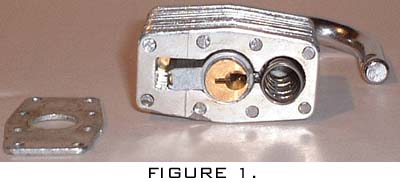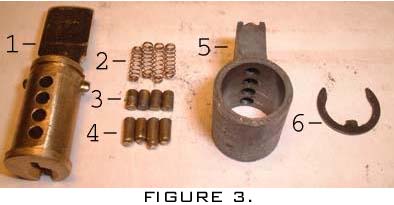
|
|
|
|
Time to share what little knowledge I possess about lock picking. I have tried to include as much information about the different types of locks that I am familiar with and the techniques that may be used to compromise them. This list is not exhaustive by any means. It simply covers the types of locks that I have been exposed to and have had the time to research.
There is a section concerning the implications of relying on locks for your personal security purposes at the end of this document.
I do not hold a degree in this subject: remember I said "little knowledge". If there is information in this document that you believe to be erroneous, please feel free to contact me at: dp@penix.org , and I will be happy to change or remove the material in question. Enjoy.
This page is very graphic intensive so please be patient while it loads ( about 4 minutes @ 56kbps ).
| / a n a t o m y / |
|
What better way to become familiar with a lock than to look inside one. The following pictures pretty well surmise the inner workings of a standard pin tumbler pad lock. To disassemble a lock you must first cut the thru-bolts. When this is achieved and the bottom plate is removed the lock will look something like what we see in figure 1.


The main cylinder (1) terminates into an interface at the top of the lock and when rotated depresses a lever that opens the lock. The holes that are bored through the top of it accepts the key pins (4). These pins are random in size and dictate the "key" of the lock. This cylinder resides within the cylinder body (5) which holds the set pins (3) which are spring loaded into their appropriate columns. These items are assembled together and locked into place with the spring clip (6).

|
|
/ a
n a t o m y /
|
Dead bolts are very similar to padlocks, not only in concept but also operation. The pictures below ( figure 5 & 6 ) are that of a cylinder from a standard dead bolt. These come in various sizes and pin variations and may also be comprised of different materials depending on manufacturer. I included Figure 5 so that you could see how the pins are arranged while at rest. Notice how the key pins stop at what is the middle of the radius of the cylinder just above a key ward. This is what keeps these pins in place.

There are some noticeable differences between padlock cylinders and dead bolt cylinders. The first thing that you will likely notice is the number of pins. Dead bolts usually contain anywhere from 5-8 pins while padlocks are limited to 4-5 pins. These pins are also slightly larger in size than those of a padlock.
The more expensive the dead bolt or padlock, the more intricate the pin design and implementation. Although there are many different implementations of parts and assembly, all locks of these types follow this basic design. I will spend a little more time on the subtle differences between manufacturer designs a little later on as these differences pertain to picking them.
I would like
to cover one more lock design before I jump into some theory.
| / a n a t o m y / |
|
These locks can be found just about anywhere, from jewelry display cases to the furniture cabinets that are in your living room or washroom. See figure 7 for an example.

Wafer tumbler locks typically implement some type of lever catch system. The catch usually consisting of a metal stop plate or a mortised hole that accepts the lever in whatever material the lock happens to be installed in.
A quick glance at that key tells us that there is at least 6 pins in this devil. Sound threatening? Don't let these locks fool you. They are technologically inferior to their pin tumbler counterparts. In fact, they don't contain any pins at all. These locks rely on a series of spring loaded brass wafers for their security, see figure 9.
To determine whether it is a pin tumbler or wafer tumbler mechanism that you are up against the following tests should quickly confirm the type:
1) Visual inspection-> Look
into the key way and examine the first pin/wafer. If they are visible it
is usually a dead giveaway.
2) Cylinder displacement->
The key cylinder is usually ill fitted. You will notice significant side
to side play as force is applied to the cylinder.
3) Pin resets-> Due to the
construction of wafer locks there is a lot of dead space surrounding the
parts. If you depress the wafers and quickly release them you will notice
that they make a "snapping" sound as opposed to a "click" as expected of
pin tumbler models.
That said, let's take a closer look at the semantics of wafer designs.

Looking at the cylinder body (item on the right in figure 8) we can see that their is more than one position that the main cylinder can lock into place. The reason for this is that the key cylinder is not controlling a complex opening mechanism (interacting with other levers, springs, etc.). The state of this lever is either 1/4 turn to the right "open" or 1/4 turn to the left "closed". This of course depends on orientation. So what are the other two flutes for? Let's look what happens when the key is inserted..

As the key passes through the wafers it moves them up and down (figure 10). The wafers that are up reside in the upper flute of the cylinder body and the ones that are pushed down reside in the bottom flute. Until the proper key has been fully inserted their will always be points of contact on the main body. This ensures that the lock will provide maximum security if anything not resembling the original key were to be inserted and turned.
Wafer tumbler locks while anatomically different from pin tumbler mechanisms still react to the same pin manipulation techniques.
Now that we have covered the basics of design, let's move onto some theory on how it is possible to open these types of locks without the use of keys.